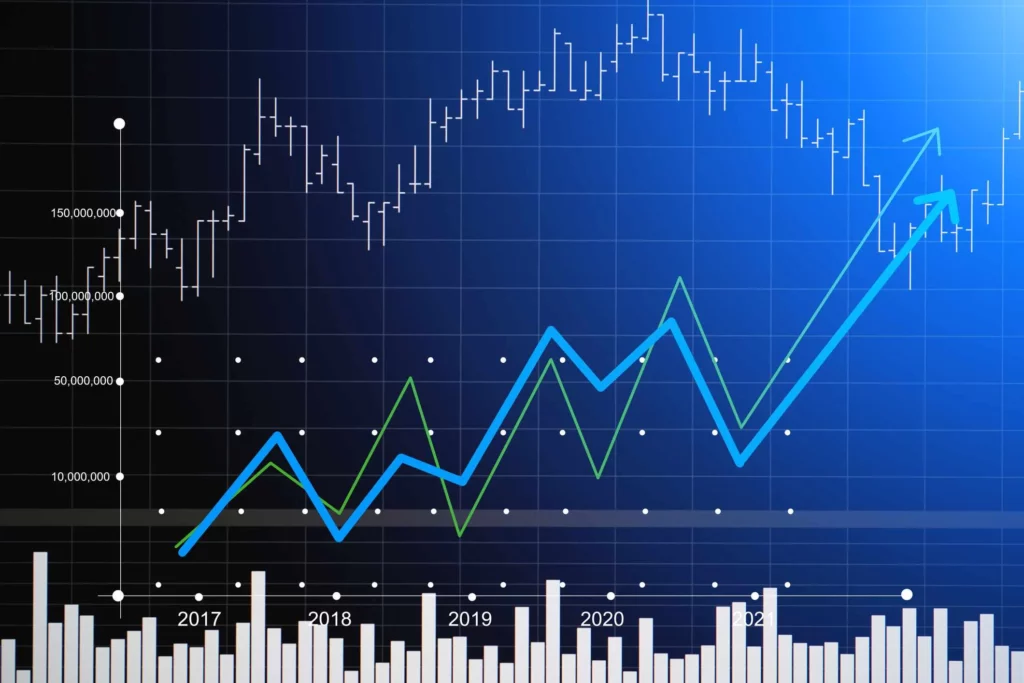
Introduction
Welcome to our in-depth look at Dividend Reinvestment Plans (DRIPs). In this article, we will delve into the complexities of DRIPs, looking at their benefits, mechanics, and how they can help you accumulate wealth over time. This guide is for you if you want to maximize your investment returns and compound your wealth through dividends.
What is a Dividend Reinvestment Plan?
A Dividend Reinvestment Plan, or DRIP, is an investment strategy that allows shareholders to automatically reinvest their dividend payments back into the stock of the issuing company. Investors receive additional shares of the company’s stock rather than cash dividends. Many publicly traded companies offer DRIPs to encourage long-term investment and to provide shareholders with a convenient way to reinvest their earnings.
The Benefits of Dividend Reinvestment Plans
1. Compounding Returns
One of the primary benefits of DRIPs is the ability to compound returns. Investors can benefit from compounding growth over time by reinvesting dividends and purchasing additional shares. As the number of shares issued grows, so do the dividend payments, creating a snowball effect that can significantly boost long-term investment returns.
2. Cost Averaging
Investors can also use DRIPs to practice dollar-cost averaging. Investors acquire shares at various price points by reinvesting dividends on a regular and automatic basis, mitigating the impact of market fluctuations. This method reduces the risk associated with market timing and provides a disciplined investment strategy.
3. No Transaction Costs
In contrast to traditional stock purchases, DRIPs frequently enable investors to acquire additional shares without incurring transaction or brokerage fees. DRIPs are a cost-effective option for long-term investors because they eliminate the burden of paying fees associated with purchasing shares on the open market.
4. Long-Term Perspective
DRIPs encourage shareholders to reinvest their dividends rather than seeking short-term gains, promoting a long-term investment mindset. This strategy adheres to the principle of buying and holding quality stocks for extended periods of time, allowing investors to benefit from the issuing company’s potential growth.
How Do Dividend Reinvestment Plans Work?
To better understand the mechanics of DRIPs, let’s walk through the typical process:
- Enrollment: Investors must first enroll in the DRIP program of a company. This is usually done via an online platform or by filling out the necessary forms provided by the company.
- Dividend Payment: When a company declares a dividend, DRIP participants receive additional shares rather than cash. The number of shares is determined by the amount of the dividend and the current stock price.
- Fractional Shares: If the dividend payment is insufficient to purchase a full share, the DRIP program may offer fractional shares. This allows investors to own a portion of a share while still receiving the full dividend.
- Bookkeeping: The company’s transfer agent keeps track of dividend reinvestments for shareholders, ensuring accurate record-keeping and providing periodic statements.
Implementing a Dividend Reinvestment Plan
If you’re considering implementing a DRIP strategy, here are some steps to get started:
- Research and Select Companies: Find companies that provide DRIPs and are in line with your investment objectives. Look for companies that have a history of consistent dividend payments and long-term growth.
- Open a Brokerage Account: A brokerage account is required to participate in a DRIP program. Select a reputable brokerage that provides access to a diverse range of stocks as well as DRIP options.
- Enroll in DRIPs: Enroll in their DRIP programs once you’ve decided which companies to invest in. Follow the company’s enrollment process or contact your brokerage for assistance.
- Monitor and Review: Monitor the performance of your investments on a regular basis and review dividend payments received. Keep track of the number of shares purchased via the DRIP program as well as the overall growth of your portfolio.
Advantages and Disadvantages of Dividend Reinvestment Plans (DRIPs)
Advantage
Return Compounding: DRIPs provide the benefit of compounding returns. Investors can benefit from the compounding effect over time by reinvesting dividends and purchasing additional shares. As the number of shares increases, so do dividend payments, resulting in faster growth of investment returns.
Cost Averaging: DRIPs make it possible for investors to practice dollar-cost averaging. Investors acquire shares at various price points by reinvesting dividends on a regular and automatic basis. This approach helps to mitigate the impact of market fluctuations and lowers the risk associated with market timing.
Convenience: The DRIP program automates dividend reinvestment, eliminating the need for manual reinvestment. This convenience saves investors time and effort when managing their portfolios.
No Transaction Fees: Many DRIP programs allow investors to buy more stock without incurring transaction or brokerage fees. DRIPs are a cost-effective option for long-term investors because they eliminate the burden of paying fees associated with purchasing shares on the open market.
Long-Term Focus: DRIPs encourage shareholders to reinvest their dividends rather than seeking short-term gains, promoting a long-term investment mindset. This is consistent with the principle of buying and holding quality stocks for extended periods of time, allowing investors to benefit from the issuing company’s potential growth.
Disadvantage
Inflexibility: DRIPs typically reinvest dividends only in the stock of the issuing company. This lack of flexibility can make it difficult for investors to diversify their portfolios across different companies and industries. To achieve a well-diversified portfolio, investors may need to consider additional investment strategies.
Potential Tax Implications: In most jurisdictions, dividends reinvested through DRIPs are still taxed. Although investors do not receive cash, they must still pay taxes on the reinvested dividends based on the value of the additional shares received. Investors must understand the tax implications specific to their jurisdiction.
Overvaluation: Automatic reinvestment via DRIPs may result in the accumulation of shares at potentially overpriced prices. This risk stems from the fact that reinvestment takes place regardless of the current value of the company’s stock. Before enrolling in a DRIP, investors should carefully examine the company’s underlying fundamentals and valuation.
Reduced Cash Flow: When investors participate in a DRIP, they forego the immediate cash flow provided by dividend payments. Individuals who rely on dividends as a source of income may suffer as a result of the reduced cash flow. Before enrolling in a DRIP, investors should assess their financial needs and consider the impact of reduced cash flow.
Overvaluation: Automatic reinvestment through DRIPs may result in the accumulation of shares at potentially exorbitant prices. This risk stems from the fact that reinvestment occurs regardless of the company’s stock’s current value. Investors should carefully examine the company’s underlying fundamentals and valuation before enrolling in a DRIP.
Reduced Cash Flow: By participating in a DRIP, investors forego the immediate cash flow provided by dividend payments. Individuals who rely on dividends for a living may suffer as a result of the decreased cash flow. Investors should assess their financial needs and consider the impact of reduced cash flow before enrolling in a DRIP.
Administrative Difficulties: While DRIPs provide convenience, there can be administrative difficulties, particularly if investors hold shares in multiple companies with different DRIP programs. Keeping track of dividends reinvested, cost basis adjustments, and overall portfolio performance may necessitate additional record-keeping and monitoring.
Conclusion
Dividend Reinvestment Plans provide investors with an appealing opportunity to maximize investment returns and accumulate wealth over time. DRIPs can play a significant role in your investment strategy by leveraging the power of compounding returns, cost averaging, and a long-term investment mindset. Take the time to research and select companies with solid DRIP programs, open a brokerage account, and enroll in the plans that correspond to your objectives. With careful monitoring and patience, you can use DRIPs to improve your financial future.
FOR MORE INFO CLICK THIS SITE:https://learningsharks.in/
FOLLOW OUR PAGE:https://www.instagram.com/learningsharks/?hl=en










